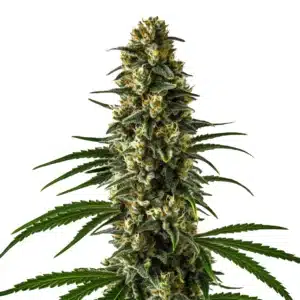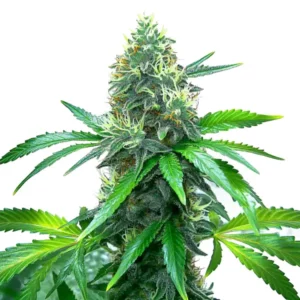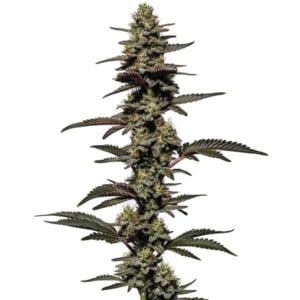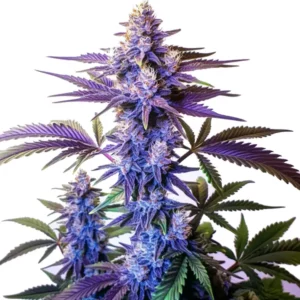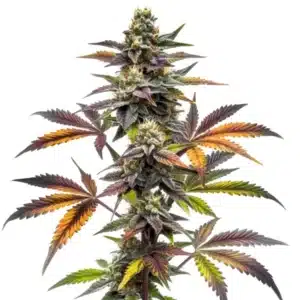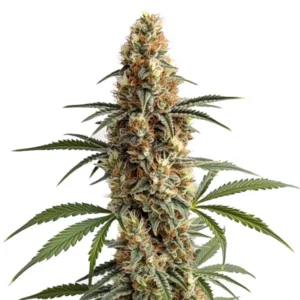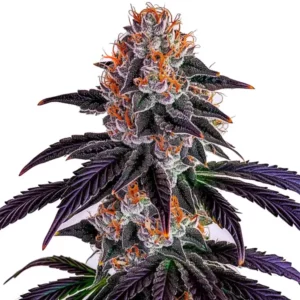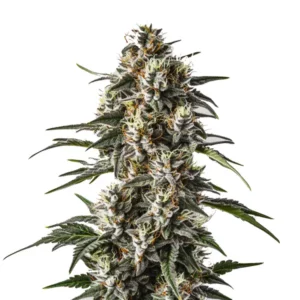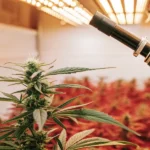
Cannabis Plant Enzyme Functions
Cannabis plant enzyme functions are a fascinating aspect of growing this versatile plant. Enzymes are proteins that act as catalysts in various biological processes, speeding them up and making them more efficient. They play a crucial part in the growth and development of cannabis plants, influencing everything from nutrient absorption to the production of cannabinoids.
When you think of enzymes, picture tiny workers inside the plant, tirelessly breaking down molecules and facilitating chemical reactions. These reactions are essential for the plant’s health and potency. For growers, understanding these processes means better control over the plant’s development, leading to higher yields and better quality.
Recommended Strains
Girl Scout Cookies
|
|
THC | 18% - 25% (Medium) |
|
|
Type | Feminized |
|
|
Yield | High |
|
|
Phenotype | 60% Indica / 40% Sativa |
OG Kush
|
|
THC | 20% - 24% (Medium) |
|
|
Type | Feminized |
|
|
Yield | Medium |
|
|
Phenotype | 55% Indica / 45% Sativa |
The world of cannabis plant enzyme functions is vast. From the moment you plant your seed to the day you harvest, enzymes are there, silently working in the background. They ensure the plant uses nutrients efficiently, which is critical for both burgeoning growers and seasoned experts.
Key Enzymes in Cannabis Plant Growth
Enzymes play a pivotal role in the growth of cannabis plants, affecting everything from seed germination to flowering. The enzymes involved in cannabis plant metabolism include cellulase, which breaks down cellulose, and amylase, which converts starches into sugars. These enzymes ensure the plant has the energy it needs to grow.
Consider cellulase as the enzyme that helps the plant digest its food. By breaking down cellulose, it ensures that the plant can absorb nutrients more efficiently. Amylase, on the other hand, provides the plant with sugars necessary for energy. Without these enzymes, the plant would struggle to grow strong and healthy.
The role of enzymes in cannabis plant growth extends beyond mere nutrient conversion. Enzymes are also involved in synthesizing essential amino acids and fatty acids, which serve as building blocks for the plant’s cellular structures. This synthesis is crucial for maintaining robust growth and development throughout the plant’s life cycle.
Furthermore, enzymes like phosphatases play a significant role in mobilizing phosphorus within the plant, a nutrient essential for energy transfer and genetic material synthesis. By facilitating these processes, enzymes contribute significantly to the overall vitality and productivity of the cannabis plant.
Enzyme Impact on Potency and Flavor
The impact of enzymes on cannabis plant potency cannot be overstated. Enzymes like protease break down proteins into amino acids, which are crucial for the plant’s overall health and cannabinoid production. This directly affects the potency of the cannabis you eventually harvest.
For those who are growing strains like OG Kush from Blimburn Seeds, enzyme activity can lead to a more flavorful and potent product. Enzymes help in developing the terpenes that give each strain its unique smell and taste.
The impact of enzymes on cannabis plant potency is also evident in the way they modulate secondary metabolite pathways. Enzymes involved in cannabis plant metabolism are responsible for creating a diverse array of terpenes and flavonoids, compounds that contribute to the plant’s unique chemical profile. These compounds not only enhance flavor but also influence the plant’s interaction with its environment.
Moreover, enzymes are crucial in maintaining the delicate balance between different cannabinoids, impacting the psychoactive and therapeutic effects of the plant. By optimizing enzyme function, growers can influence the chemical composition of their harvest, tailoring the potency and effects to desired standards.
Promos & Deals
Cannabis Plant Enzyme Activity Studies
Research into cannabis plant enzyme activity studies is continually advancing our understanding of how these enzymes function. Such studies have shown that enzymes are not only vital for growth but also play a significant role in stress response, helping plants to withstand environmental challenges.
For instance, enzymes can help cannabis plants cope with excess heat or drought. In stressful conditions, certain enzymes ramp up their activity, ensuring the plant continues to function optimally. This knowledge is invaluable for growers aiming for resilience in their crops.
Recent cannabis plant enzyme activity studies have shed light on the dynamic nature of these proteins under varying environmental conditions. These studies reveal how enzymes adapt their activity to optimize nutrient uptake and metabolism, ensuring the plant’s survival and productivity even under suboptimal conditions.
Moreover, the insights gained from these studies are paving the way for innovative cultivation strategies. By knowing the triggers that enhance enzyme activity, growers can manipulate conditions such as light exposure and nutrient availability to maximize plant health and yield. This research underscores the critical role of enzymes in cannabis plant growth and resilience.
Practical Applications for Growers
Experienced growers can apply this knowledge of enzymes to improve their cultivation techniques. For example, ensuring optimal temperature and humidity levels can enhance enzyme activity, leading to healthier plants and better yields. This is especially crucial for strains like Girl Scout Cookies.
Using enzyme-rich supplements is another practical approach. These supplements can boost the plant’s natural enzyme production, providing a more robust growth environment. This is particularly beneficial during the flowering stage when the demand for nutrients and energy is high.
Practical applications for growers also include the strategic use of cannabis plant enzyme extraction methods to create customized nutrient solutions. By isolating specific enzymes, growers can enhance particular aspects of plant growth, such as root development or flowering, providing targeted support where it is most needed.
Additionally, integrating enzyme monitoring into routine cultivation practices can offer real-time insights into plant health. By tracking enzyme activity, growers can make informed decisions about irrigation, fertilization, and pest management, optimizing conditions for maximum plant performance and yield.
Enzyme Extraction and Utilization
Cannabis plant enzyme extraction methods have become an area of interest for those looking to harness these powerful proteins. Extracting enzymes can allow for their use in various applications, from improving soil health to creating specialized fertilizers.
One common method involves using solvents to isolate enzymes from plant tissues. This process can yield highly concentrated enzyme solutions that can be used to boost plant growth or enhance soil quality. These solutions are particularly useful in organic farming practices.
Advanced cannabis plant enzyme extraction methods are constantly being refined to increase efficiency and yield. Techniques such as enzyme-assisted extraction leverage the natural catalytic properties of enzymes to enhance the release of active compounds, making the process more sustainable and cost-effective.
The utilization of extracted enzymes extends beyond agriculture, finding applications in industries such as pharmaceuticals and cosmetics. Enzymes extracted from cannabis plants are being explored for their potential in producing bioactive compounds, opening new avenues for innovation in multiple sectors.
Potential for Future Innovations
The future of cannabis cultivation is bright with the potential of enzymes. As more is learned about enzyme functions, new products and techniques are likely to emerge. This could include enzyme-based treatments that enhance specific plant characteristics or improve resistance to pests.
Growers can look forward to innovations that allow for even greater control over the cultivation process. Enzymes could be the key to unlocking new levels of potency and flavor in cannabis strains, leading to products that are both more enjoyable and more effective.
Envisioning the future, enzymes hold the promise of revolutionizing cannabis cultivation through precision agriculture. By harnessing enzyme functions, growers can develop highly specialized cultivation protocols tailored to specific strain characteristics, optimizing outcomes in terms of flavor, potency, and yield.
Furthermore, the integration of enzyme technology with digital farming tools could enable real-time monitoring and automated adjustments, leading to unprecedented levels of efficiency and sustainability. As research progresses, the impact of enzymes on cannabis plant potency and overall cultivation practices is poised to be transformative.

FAQs
What are cannabis plant enzyme functions?
Cannabis plant enzyme functions refer to the roles that enzymes play in aiding the plant’s biological processes. These enzymes act as catalysts, speeding up chemical reactions necessary for the plant’s growth and development. They help in breaking down nutrients, facilitating energy production, and supporting the creation of cannabinoids and terpenes.
Enzymes are crucial for maintaining the plant’s health and vigor. By ensuring efficient nutrient use, they contribute to the overall potency, flavor, and yield of the cannabis plant. Knowing these functions can help growers optimize their cultivation practices.
Cannabis plant enzyme functions are also integral to the plant’s ability to adapt to environmental changes. Enzymes play a role in modulating stress responses, enabling the plant to better withstand challenges such as pests, diseases, and climate fluctuations, thereby safeguarding plant health and productivity.
Moreover, the insight into enzyme functions provides a foundation for developing sustainable cultivation practices. By leveraging the natural capabilities of enzymes, growers can reduce reliance on chemical inputs, promote ecological balance, and enhance the overall sustainability of cannabis farming.
How do enzymes affect cannabis plant potency?
The impact of enzymes on cannabis plant potency is significant. Enzymes like protease help break down proteins into amino acids, essential for the plant’s growth and cannabinoid production. This process directly influences the strength and effectiveness of the harvested buds.
Additionally, enzymes aid in the development of terpenes, which contribute to the plant’s aroma and flavor profile. By optimizing enzyme activity, growers can enhance both the potency and sensory qualities of their cannabis strains.
Enzymes involved in cannabis plant metabolism also play a critical role in modulating the biosynthesis of key cannabinoids such as THC and CBD. By influencing the pathways that lead to cannabinoid formation, enzymes have a direct impact on the plant’s medicinal and psychoactive properties.
Furthermore, the impact of enzymes on cannabis plant potency is amplified during post-harvest processing. Enzymes assist in the curing process, breaking down chlorophyll and other compounds to enhance the flavor and smoothness of the final product, ensuring a more enjoyable consumption experience.
What enzymes are involved in cannabis plant metabolism?
Several enzymes are involved in cannabis plant metabolism, each serving a specific function. Key enzymes include cellulase, which helps break down cellulose into simpler sugars, and amylase, which converts starches to sugars for energy. Together, these enzymes ensure the plant has the resources it needs to thrive.
Other enzymes like protease and lipase also play important roles in breaking down proteins and fats, respectively. By knowing these enzymes, growers can create optimal conditions for their plants to flourish.
Enzymes like oxidase and reductase are also pivotal in cannabis plant metabolism, facilitating redox reactions that are essential for energy production and metabolic balance. These enzymes help maintain cellular homeostasis, a critical factor in sustaining healthy plant growth.
Moreover, enzymes such as synthase contribute to the assembly of complex molecules from simpler precursors, supporting the plant’s structural and functional integrity. By comprehending the full spectrum of enzymes involved in cannabis plant metabolism, growers can fine-tune their cultivation strategies for better outcomes.
Can enzyme activity be controlled in cannabis cultivation?
Yes, growers can influence enzyme activity through environmental management and supplementation. By maintaining ideal temperature, humidity, and soil conditions, growers can enhance natural enzyme functions, leading to healthier plants and improved yields.
Enzyme-rich supplements can also be used to boost the plant’s enzyme production. These products enhance nutrient uptake and help the plant better cope with stress, offering a practical tool for improving cultivation outcomes.
Controlling enzyme activity can also be achieved through precision nutrient management. By providing a balanced supply of macro and micronutrients, growers can stimulate optimal enzyme activity, ensuring that the plant’s metabolic processes are operating at peak efficiency.
Additionally, employing advanced monitoring technologies allows growers to track enzyme activity in real-time, making it possible to implement timely interventions. This proactive approach ensures that the role of enzymes in cannabis plant growth is fully leveraged for maximum productivity and quality.
Are there any studies on cannabis plant enzyme activity?
Numerous cannabis plant enzyme activity studies have been conducted, providing valuable insights into how these proteins function and affect plant growth. These studies have highlighted the importance of enzymes in stress response, nutrient absorption, and cannabinoid synthesis.
Such research continues to inform best practices in cannabis cultivation, allowing growers to leverage enzyme functions for improved crop quality and resilience. Ongoing studies promise to uncover even more about these remarkable proteins and their potential applications.
Recent studies have also focused on the genetic basis of enzyme activity, exploring how genetic variations influence enzyme functions and plant traits. This research could lead to the development of new cannabis varieties with enhanced enzyme profiles, tailored to specific cultivation goals.
Furthermore, collaborative research efforts are increasingly integrating enzyme studies with other fields, such as microbiome research, to better understand the complex interactions between enzymes and other biological factors in the cultivation environment. These interdisciplinary approaches are opening new frontiers in cannabis science.


